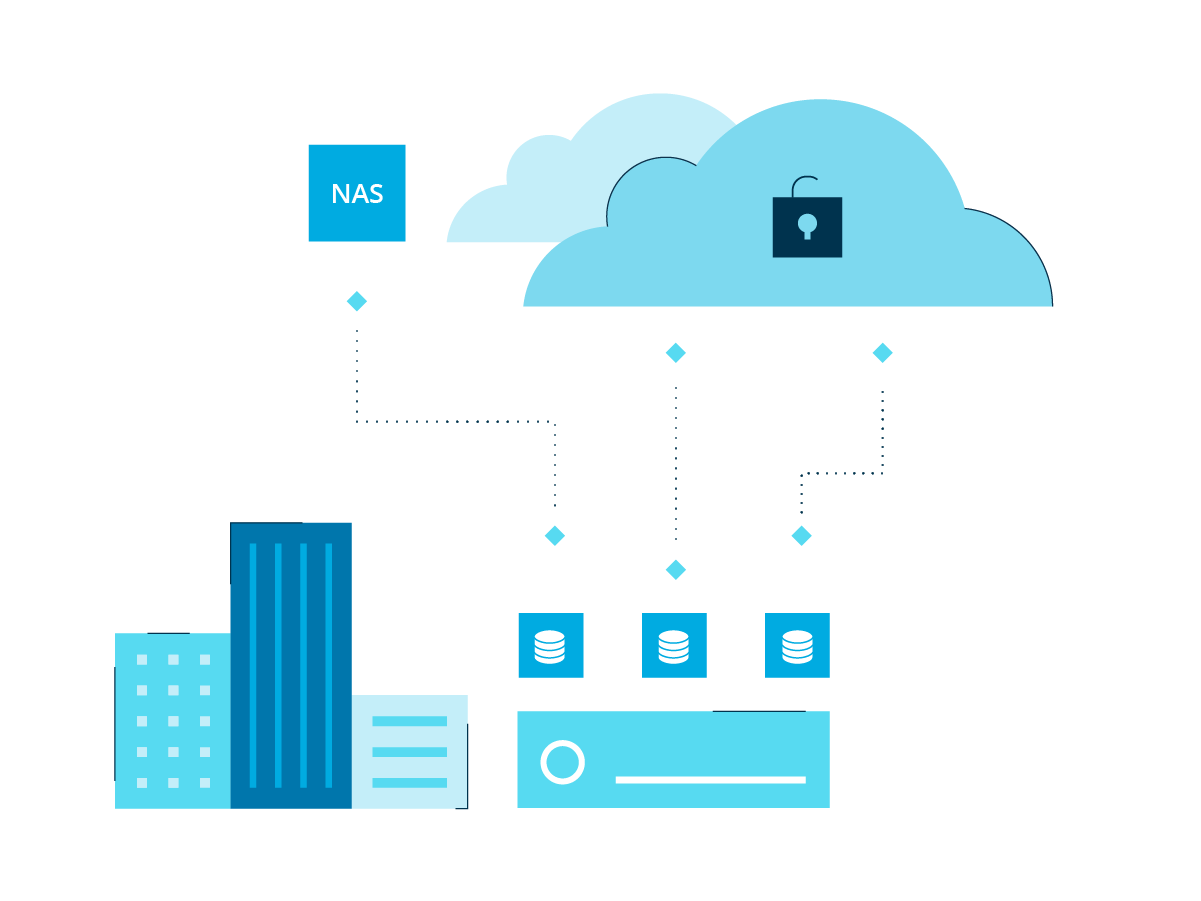As volumes of data grow, organizations are seeking new and improved ways to protect that valuable information. For many enterprises, that means finding a next-generation backup solution for data stored in Network Attached Storage (NAS) environments.
To understand why NAS backup is more challenging today than it used to be, it’s important to know how data in NAS enterprise storage was traditionally protected.
The Rise of NDMP
In 1995, NAS industry leaders NetApp and Intelliguard developed the Network Data Management Protocol (NDMP), an open standard protocol designed specifically for NAS network-based backup. It revolutionized NAS backup in several ways, making it significantly more reliable and simple. NDMP allowed IT to offload backup traffic to attached devices to avoid bottlenecks on what were then 100-Mbps networks. The protocol also centralized data management so a single backup application could protect multiple NAS devices. And data management vendors no longer had to create unique agents or device drivers for their NAS solutions—they could simply develop interfaces according to the NDMP standard.
When it came to protecting NAS data, NDMP quickly became the de facto approach and NAS backups were no longer the challenge they had been.
A New Approach Is Needed Today
Fast forward 25 years and NDMP is still the most common approach used in NAS backup solutions. But what worked well in 1995 is no longer sufficient to keep data in enterprise storage protected the way it should be.
NDMP’s limitations have become more apparent as data sets grow exponentially. When it was first developed, a data set of 10 TB might be considered huge. Now, it’s not uncommon to have data sets that are hundreds of terabytes or even petabytes.
The protocol doesn’t handle today’s enormous data sets very well, because it was designed to manage single-stream backups for each NAS device. Backing up massive volumes of data, especially unstructured data, creates serious bottlenecks. To address this issue today, NDMP-based backup solutions offer image-level backups. But that forces users to recover entire file systems even if all they need is a single file.
Because NDMP-based backup solutions were designed to store data on tape, these solutions usually require IT to periodically create a full backup to minimize the slow recovery times that can result from numerous incremental backups.
Finally, NDMP doesn’t standardize a data format for NAS backups—solution vendors must determine the format themselves—which has led to a variety of incompatible platforms, which means that data backed up on one platform can’t be restored to a different one.
While NDMP was the breakthrough NAS needed more than two decades ago, today it only presents more challenges, from encouraging vendor lock-in to lowering performance to increasing TCO.
Rubrik Offers NAS Protection that Scales with Your Data
At Rubrik, we take a non-NDMP, vendor-agnostic approach to NAS data management and backup—for speedy recovery point and recovery time objectives (RPO and RTO), incremental forever backups, and cloud archiving features.
Rubrik NAS Direct Archive allows you to store unstructured data sets of any size, right where you want, from on-premises to the cloud. It offers fast file scans and indexed metadata for reliable, rapid data access and recovery down to a single file. Incremental-forever backups help reduce storage and egress costs, for a lower TCO.
By protecting your NAS data in a generic format, you get simple, cross-platform archival and data restore capabilities in private or public clouds. And it’s easy to move NAS data to your preferred storage platforms to avoid vendor lock-in.
Learn more about how Rubrik can help you protect your NAS data with NAS Direct Archive.


